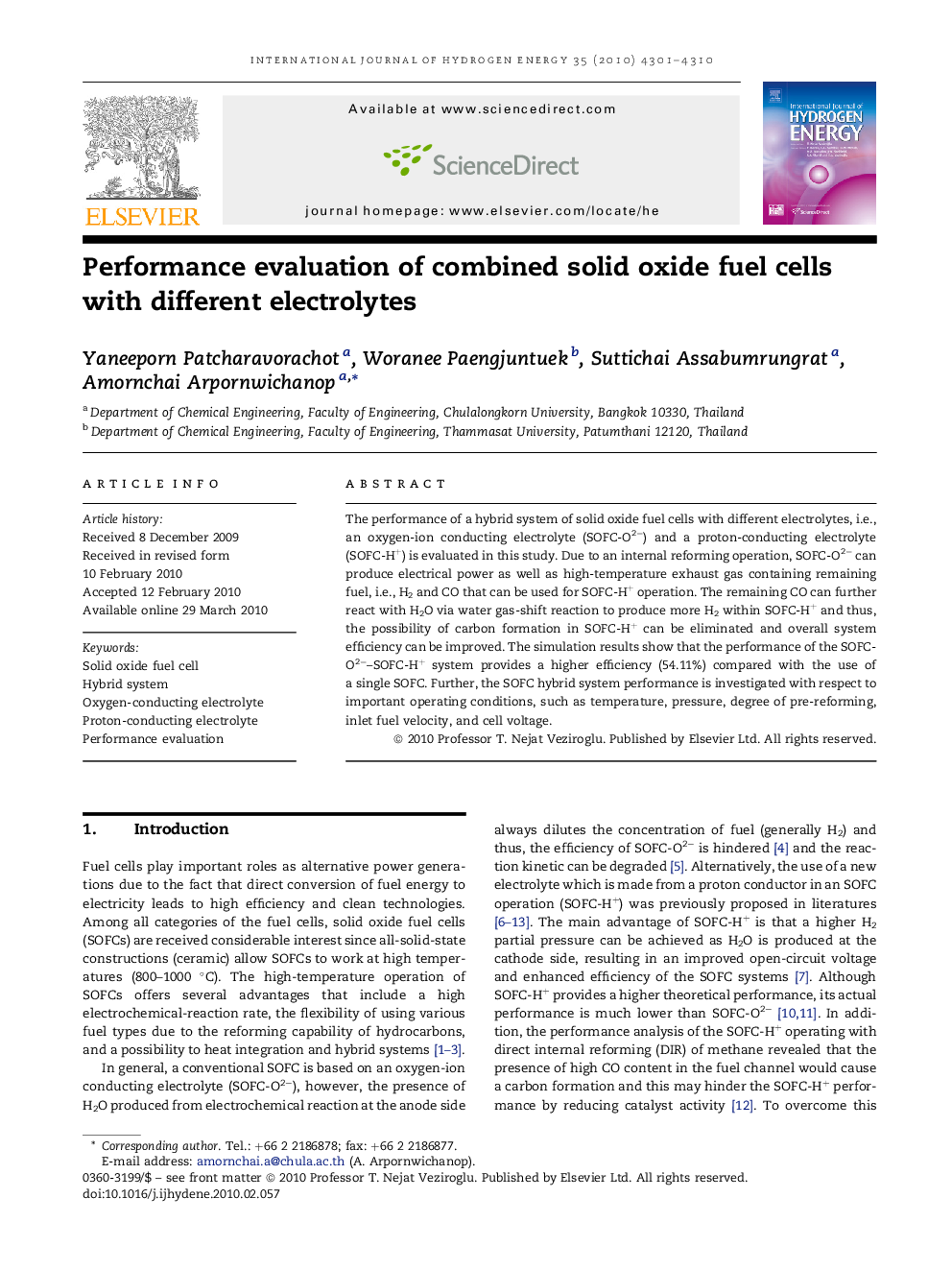| Article ID | Journal | Published Year | Pages | File Type |
|---|---|---|---|---|
| 1273129 | International Journal of Hydrogen Energy | 2010 | 10 Pages |
The performance of a hybrid system of solid oxide fuel cells with different electrolytes, i.e., an oxygen-ion conducting electrolyte (SOFC-O2−) and a proton-conducting electrolyte (SOFC-H+) is evaluated in this study. Due to an internal reforming operation, SOFC-O2− can produce electrical power as well as high-temperature exhaust gas containing remaining fuel, i.e., H2 and CO that can be used for SOFC-H+ operation. The remaining CO can further react with H2O via water gas-shift reaction to produce more H2 within SOFC-H+ and thus, the possibility of carbon formation in SOFC-H+ can be eliminated and overall system efficiency can be improved. The simulation results show that the performance of the SOFC-O2−–SOFC-H+ system provides a higher efficiency (54.11%) compared with the use of a single SOFC. Further, the SOFC hybrid system performance is investigated with respect to important operating conditions, such as temperature, pressure, degree of pre-reforming, inlet fuel velocity, and cell voltage.
